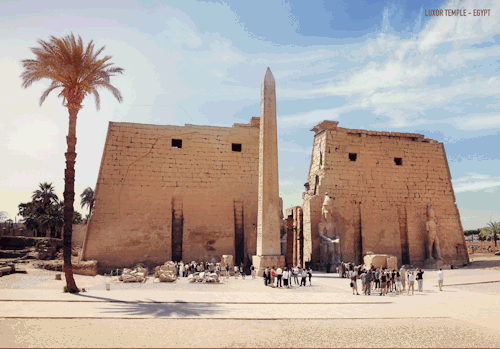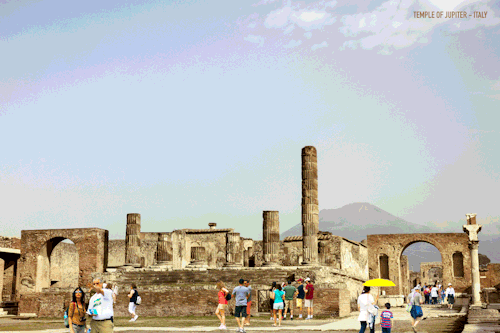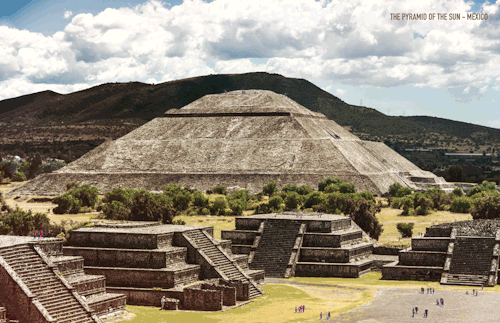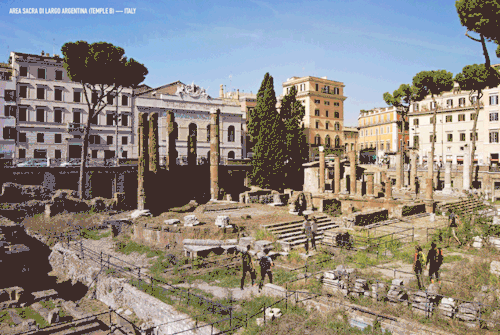Philip De László (1869-1937) “Helen Beatrice Myfanwy Hughes” (1931) Oil On Canvas

Philip de László (1869-1937) “Helen Beatrice Myfanwy Hughes” (1931) Oil on canvas
More Posts from Twiggietruth and Others








“Rothschild Canticles”, turn of the 14th century ”An intensely illustrated florilegium of meditations and prayers drawing from Song of Songs and Augustine’s De Trinitate, among other texts, the Rothschild Canticles is remarkable for its full-page miniatures, historiated initials, and drawings, which show the work of multiple artists.” Source







Ancient ruins give us a fascinating window into the past..
Ancient ruins give us a fascinating window into the past: how people lived, the spaces they inhabited and their daily lives. Historians, architects and travellers alike marvel at these remnants of time past, but it’s often hard to get a sense of what these spectacular buildings would have looked like at their peak. We decided to step back in time and recreate some of our favorite ancient ruins in their original locations.
Identified from the top:
The Parthenon Athens, Greece / 432 BC
Luxor Temple Luxor, Egypt / 1380 BC
Nohoch Mul Pyramid (Coba) Quintana Roo, Mexico / 100 BC-100 AD
Temple of Jupiter Pompeii, Italy / 200 BC
Milecastle 39 (Part of Hadrian’s Wall) Northumberland, England / 100 AD
The Pyramid of the Sun, Teotihuacán Teotihuacan, Mexico / 200 CE
Area Sacra di Largo Argentina—Temple B Rome, Italy / 101 BC
Now, guess what you are? You’re a soul. And as a soul, you have one big mission; and that is to find your calling. Every soul has their own calling, regardless of who they are, what they have done, or what they have yet to do.

Miniature Skeleton, Roman, 1st century, bronze, from Asia Minor.
In Petronius’ satirical novel, the Satyricon, written in the 60s A.D., Trimalchio, the crass, nouveau riche host of a dinner party, has a small silver skeleton brought out between courses. The skeleton in the novel had flexible joints and after posing it on the table in various ways, Trimalchio recited a poem to the effect that life was short and should be enjoyed before becoming a skeleton like the one he displayed.
This bronze skeleton, called a larva convivalis by the Romans, may have been used in just such a setting. Although now missing several limbs, it too is jointed in a way that allows it to be posed or to be shaken so that it jumps and dances. In the first century B.C and the first century A.D., the Romans frequently linked images of the banquet and death in both literature and the visual arts. This blending of imagery probably derived from the resurgence during this period in the popularity of Epicurean philosophy with its emphasis on the need to grasp the pleasures of life while one is still able. (Getty)
Courtesy of & can be viewed at The J. Paul Getty Museum, Villa Collection, Malibu, California. Via their online collections: 78.AB.307.
The galaxy above her

Biagio d'Antonio - Madonna and Child with An Angel. Detail. 1480 - 1485
IMPORTANT: AVOID LONDON BRIDGE & BOROUGH MARKET
MET POLICE & BBC CONFIRMED TWO SEPARATE MAJOR INCIDENTS
NUMBER OF CASUALTIES AFTER STABBINGS & VEHICLE ATTACK ON LONDON BRIDGE AND ARMED POLICE RESPONDING TO SHOOTINGS NEAR BOROUGH MARKET UPDATE: THIRD INCIDENT IN THE VAUXHALL AREA

At the end of the day, you are in control of your own universe. No matter who has tainted it, who has hurt it, who has hurt you, no matter if somebody has torn through it like a black hole to a quasar. It is still yours, and they cannot take that away from you. They cannot take away your beauty, even beauty that is born from destruction; our universe is proof of that.
- physicists-need-love-too, on my alien invasion



This is the last letter of Marie Antoinette, written in the early morning hours of October 16th on the day of her execution. After her trial concluded she was brought back to her cell in the Conciergerie and penned this tear stained letter to her sister in law, Madame Elisabeth. It would never reach its’ intended recipient.
16th October, 4.30 A.M. It is to you, my sister, that I write for the last time. I have just been condemned, not to a shameful death, for such is only for criminals, but to go and rejoin your brother. Innocent like him, I hope to show the same firmness in my last moments. I am calm, as one is when one’s conscience reproaches one with nothing. I feel profound sorrow in leaving my poor children: you know that I only lived for them and for you, my good and tender sister. You who out of love have sacrificed everything to be with us, in what a position do I leave you! I have learned from the proceedings at my trial that my daughter was separated from you. Alas! poor child; I do not venture to write to her; she would not receive my letter. I do not even know whether this will reach you. Do you receive my blessing for both of them. I hope that one day when they are older they may be able to rejoin you, and to enjoy to the full your tender care. Let them both think of the lesson which I have never ceased to impress upon them, that the principles and the exact performance of their duties are the chief foundation of life; and then mutual affection and confidence in one another will constitute its happiness. Let my daughter feel that at her age she ought always to aid her brother by the advice which her greater experience and her affection may inspire her to give him. And let my son in his turn render to his sister all the care and all the services which affection can inspire. Let them, in short, both feel that, in whatever positions they may be placed, they will never be truly happy but through their union. Let them follow our example. In our own misfortunes how much comfort has our affection for one another afforded us! And, in times of happiness, we have enjoyed that doubly from being able to share it with a friend; and where can one find friends more tender and more united than in one’s own family? Let my son never forget the last words of his father, which I repeat emphatically; let him never seek to avenge our deaths. I have to speak to you of one thing which is very painful to my heart, I know how much pain the child must have caused you. Forgive him, my dear sister; think of his age, and how easy it is to make a child say whatever one wishes, especially when he does not understand it. It will come to pass one day, I hope, that he will better feel the value of your kindness and of your tender affection for both of them. It remains to confide to you my last thoughts. I should have wished to write them at the beginning of my trial; but, besides that they did not leave me any means of writing, events have passed so rapidly that I really have not had time. I die in the Catholic Apostolic and Roman religion, that of my fathers, that in which I was brought up, and which I have always professed. Having no spiritual consolation to look for, not even knowing whether there are still in this place any priests of that religion (and indeed the place where I am would expose them to too much danger if they were to enter it but once), I sincerely implore pardon of God for all the faults which I may have committed during my life. I trust that, in His goodness, He will mercifully accept my last prayers, as well as those which I have for a long time addressed to Him, to receive my soul into His mercy. I beg pardon of all whom I know, and especially of you, my sister, for all the vexations which, without intending it, I may have caused you. I pardon all my enemies the evils that they have done me. I bid farewell to my aunts and to all my brothers and sisters. I had friends. The idea of being forever separated from them and from all their troubles is one of the greatest sorrows that I suffer in dying. Let them at least know that to my latest moment I thought of them. Farewell, my good and tender sister. May this letter reach you. Think always of me; I embrace you with all my heart, as I do my poor dear children. My God, how heart-rending it is to leave them forever! Farewell! farewell! I must now occupy myself with my spiritual duties, as I am not free in my actions. Perhaps they will bring me a priest; but I here protest that I will not say a word to him, but that I will treat him as a total stranger.

The Briar Rose Book of Old Fairy Tales Illustrated by Anne Anderson. T. C. & E. C. Jack, LDT. .c.1920.
-
 catherinebronte liked this · 11 months ago
catherinebronte liked this · 11 months ago -
 saphicspacesociety9 reblogged this · 1 year ago
saphicspacesociety9 reblogged this · 1 year ago -
 blackbirdscreaming reblogged this · 1 year ago
blackbirdscreaming reblogged this · 1 year ago -
 mannkentt-blog reblogged this · 1 year ago
mannkentt-blog reblogged this · 1 year ago -
 mannkentt-blog liked this · 1 year ago
mannkentt-blog liked this · 1 year ago -
 yourlocalmintgelato liked this · 1 year ago
yourlocalmintgelato liked this · 1 year ago -
 moody-room liked this · 1 year ago
moody-room liked this · 1 year ago -
 halfwaysleeping liked this · 2 years ago
halfwaysleeping liked this · 2 years ago -
 storm-of-steel liked this · 2 years ago
storm-of-steel liked this · 2 years ago -
 daydream-nostalgia liked this · 2 years ago
daydream-nostalgia liked this · 2 years ago -
 thehemlockreaper liked this · 2 years ago
thehemlockreaper liked this · 2 years ago -
 victorian-femme-fatale liked this · 2 years ago
victorian-femme-fatale liked this · 2 years ago -
 victorian-femme-fatale reblogged this · 2 years ago
victorian-femme-fatale reblogged this · 2 years ago -
 narwhalastic liked this · 2 years ago
narwhalastic liked this · 2 years ago -
 therandomdreams liked this · 2 years ago
therandomdreams liked this · 2 years ago -
 clearweaselartisanturtle liked this · 2 years ago
clearweaselartisanturtle liked this · 2 years ago -
 riquewihr liked this · 2 years ago
riquewihr liked this · 2 years ago -
 pearwolf liked this · 2 years ago
pearwolf liked this · 2 years ago -
 cottoncandybooks reblogged this · 2 years ago
cottoncandybooks reblogged this · 2 years ago -
 saltmatchescandlewax reblogged this · 2 years ago
saltmatchescandlewax reblogged this · 2 years ago -
 mercury76 liked this · 2 years ago
mercury76 liked this · 2 years ago -
 lifeonthepond liked this · 2 years ago
lifeonthepond liked this · 2 years ago -
 nothinginterestingasisay liked this · 2 years ago
nothinginterestingasisay liked this · 2 years ago -
 marilublu liked this · 2 years ago
marilublu liked this · 2 years ago -
 violetandmagenta liked this · 2 years ago
violetandmagenta liked this · 2 years ago -
 donghksng liked this · 2 years ago
donghksng liked this · 2 years ago -
 chrrbm liked this · 2 years ago
chrrbm liked this · 2 years ago -
 petrolflowers liked this · 2 years ago
petrolflowers liked this · 2 years ago -
 eternal-ills reblogged this · 2 years ago
eternal-ills reblogged this · 2 years ago -
 ebklsbxgd liked this · 2 years ago
ebklsbxgd liked this · 2 years ago -
 the-wandering-waif reblogged this · 2 years ago
the-wandering-waif reblogged this · 2 years ago -
 roman5757 liked this · 2 years ago
roman5757 liked this · 2 years ago -
 k4kaylee liked this · 2 years ago
k4kaylee liked this · 2 years ago -
 artemisivs reblogged this · 3 years ago
artemisivs reblogged this · 3 years ago -
 artemisivs liked this · 3 years ago
artemisivs liked this · 3 years ago -
 poirecanelle reblogged this · 3 years ago
poirecanelle reblogged this · 3 years ago -
 nodestleopool liked this · 3 years ago
nodestleopool liked this · 3 years ago -
 estrelare liked this · 3 years ago
estrelare liked this · 3 years ago -
 moonbutlost liked this · 3 years ago
moonbutlost liked this · 3 years ago -
 honeybee-child reblogged this · 3 years ago
honeybee-child reblogged this · 3 years ago -
 uncoloredhearts liked this · 3 years ago
uncoloredhearts liked this · 3 years ago -
 andrasta14 liked this · 3 years ago
andrasta14 liked this · 3 years ago -
 andrasta14 reblogged this · 3 years ago
andrasta14 reblogged this · 3 years ago -
 smoothrools liked this · 3 years ago
smoothrools liked this · 3 years ago